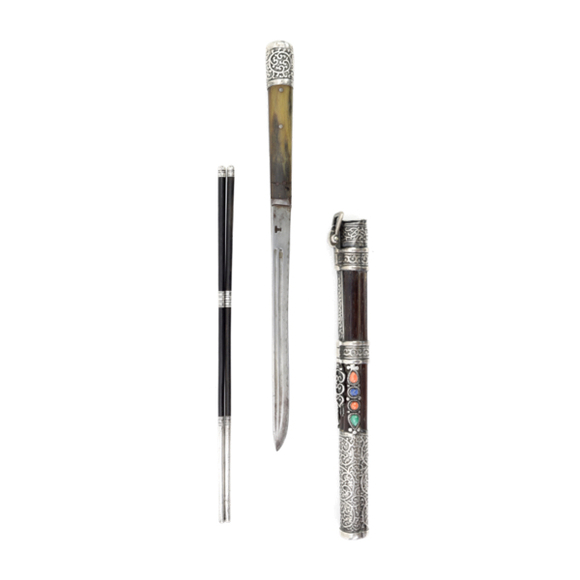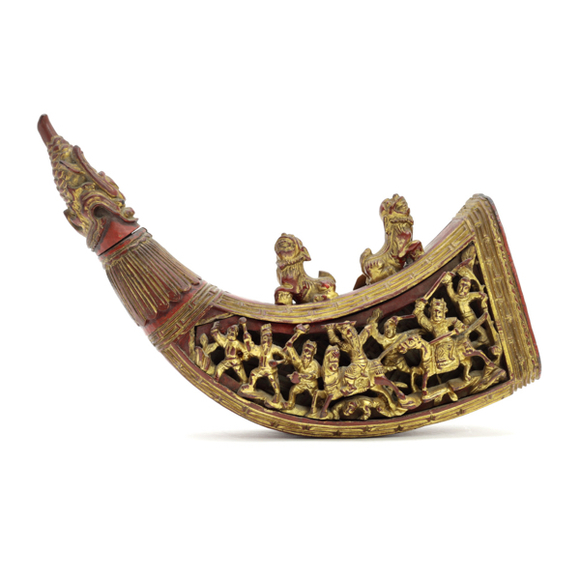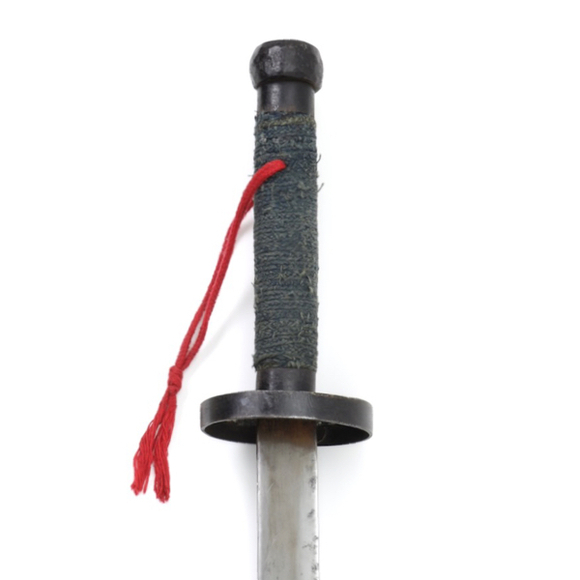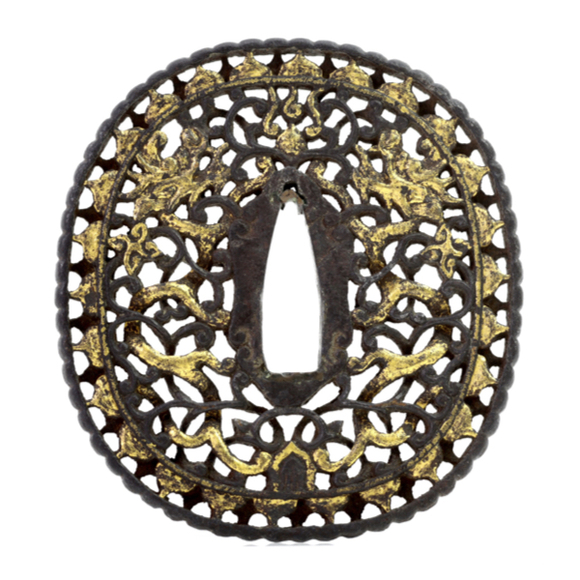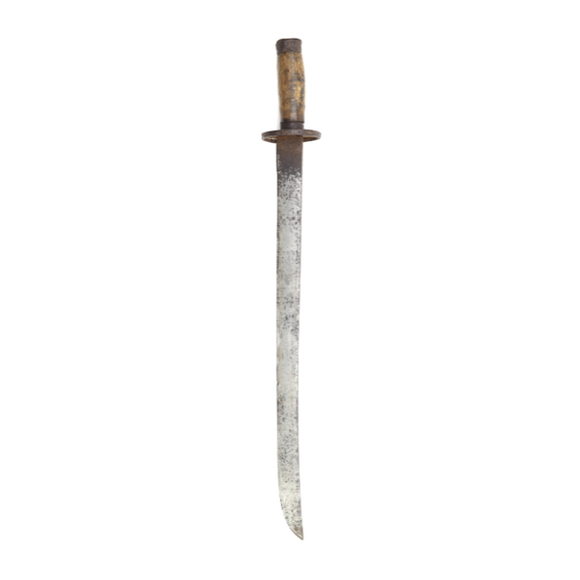DescriptionA Mongolian trousse with horn hilted

93 x 42 x 11 mm
70 grams
Silver with traces of gilding
China or Mongolia
18th or 19th century
Imported into Europe before 1866
Description
Presented here is an exceptional all-silver belt buckle, executed in the openwork style of the high Qing of the 17th-18th century.
It features two rectangular mounts with indented corners, ribbed sides and center panels with two facing dragons among foliage, reaching the sacred jewel in the center. Each mount has an additional dragon head, one permanently holds an oval ring, the other is made so it can hook into it, creating a buckle. The oval ring itself, tapering from narrow on one side to wide on the other, reflects the shape of the saber rings found on Manchu bow cases.
It also has some unusual features. For example, the alignment of the rectangular mounts in a buckle arrangement tends to have the buckle on the short sides, instead of the long side here. Rivets that connect the mount to the belt often go through the design, here each mount has four rings on the sides to accommodate this. It was probably a buckle for a belt of an informal dress.
The piece has traces of gilding, and was probably at some point entirely gilt.
Markings
The piece has several silver marks stamped on the reverse. The main ring holding mount has two sets of double A in a square, and one unintelligible square mark. The ring has a dog's head with the "3" on the left and what looks like "A" on the right. The dog hallmark indicates 800-grade silver, which means 80% purity.

The A mark was a Vienna office mark that indicated taxes were paid over the silver. The practice of marking the office separately from the hallmark endured from 1867-1872. From 1872-1922 the town marks were inside the hallmarks.
This piece shows both, indicating that it was perhaps stamped twice. One for tax, and one for the silver content, several years apart. Such marks appear on silver made locally, but also on imported silver wares. The absence of a maker's mark here hints towards it being imported.
Who made it
Stylistically it is Qing imperial, but the execution in solid silver is unusual for the Qing, who usually preferred gold damascened iron or gilt copper. That said, some bow cases, quivers, and belts in the imperial collection do have silver overlaid mounts and there is the odd silver-mounted imperial dagger.
Silver was much more on trend in Mongolia, and among the Mongolian population in Beijing. Mongolian silversmiths were often itinerant, moving from settlement to settlement. Their skill level was high:
"Every man has a silver-handled knife, silver-handled chopsticks, both fitting into a heavy silver case, a silver flint case, knobs for his keys, saddle, bridle, and backstrap ornaments of silver. Many people have food basins gold- or silver-lined. Silversmiths take 40 percent of the silver for their work. They do not have any designs except those which they carry in their heads.
The craftsman goes to the encampment where he is desired to work. Each member of the family who has a lump of silver and wants an article made talks with him about the design he or she would like. One wants antelopes in a grove of birches in relief on the bottom of his food bowl. Another desires the eight emblems of sacrifice in a circle round the wood. Another would like coral and jade set in the pattern of a flower on the two sides of his snuff bottle. A young girl wants a dragon twisted into a bracelet.
A man would like the twelve animals of the zodiac on his knife sheath so that he can keep track more easily of the name of the year.
When the silversmith knows what is wanted, he gets out his crucible for melting the metal and the tools for shaping it. The lump of pure gold or pure silver is handed over to him and he goes to work. The Mongol silversmith does beautiful, solid work, equal to any metal work that I have seen in any other place in the world."
-Frans August Larson
From: Larson Duke of Mongolia.
Boston, Little, Brown, and Company. 1930 Page 66.
Considering the above, I would classify it as either a rare Qing imperial work or otherwise Mongolian, exhibiting the highest skill.
It comes with a custom patinated brass upright stand.













Probably of Southern origin, with a straight blade and flaring tip.
In the style of northern work of the 16th and 17th centuries
A simple utilitarian weapon, probably made for rural martial artists or militia.

